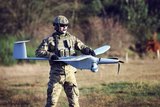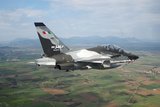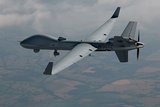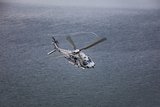Why SCAF and GCAP should seek common ground
GCAP is a direct rival to the other European sixth-gen combat aircraft initiative SCAF. (Photo: BAE Systems)
International industrial collaboration to develop common technologies and subsystems that are applicable to different – and even potential rival – aircraft programmes make perfect sense on paper.
Yet can this approach exist in the face of politics and operational requirements that demand a 100% perfect solution?
While Dassault’s independently developed Rafale has proved both successful for its country of origin as well as for export and is intended for service into the 2050s and beyond, the new effort on the block in France is the Système de Combat Aérien du Futur, or SCAF, intended to replace older canard-delta designs during
Already have an account? Log in
Want to keep reading this article?
More from Air Warfare
-
![Leonardo signs contract on Austria’s M-346 aircraft order]()
Leonardo signs contract on Austria’s M-346 aircraft order
The first of the 12 M-346 aircraft are expected to be delivered to the Austrian Air Force by 2028, according to the company.
-
![2025 UAV market review: $7.8 billion in new contracts signed as US leads spending]()
2025 UAV market review: $7.8 billion in new contracts signed as US leads spending
Qatar and Indonesia followed the US’s high spending on new uncrewed aerial vehicle contracts across 2025, while MALE and micro drones and loitering munitions were particularly popular subcategories this year.
-
![German Navy in “ramp-up” phase as it welcomes first NH90 Sea Tiger delivery]()
German Navy in “ramp-up” phase as it welcomes first NH90 Sea Tiger delivery
With all 31 aircraft set to be delivered by 2030, the helicopters will gradually replace the ageing Sea Lynx fleet which are due to be retired in 2026.





















